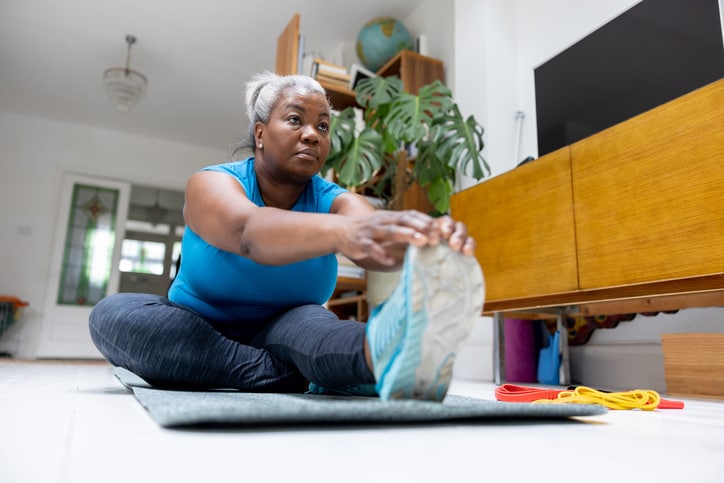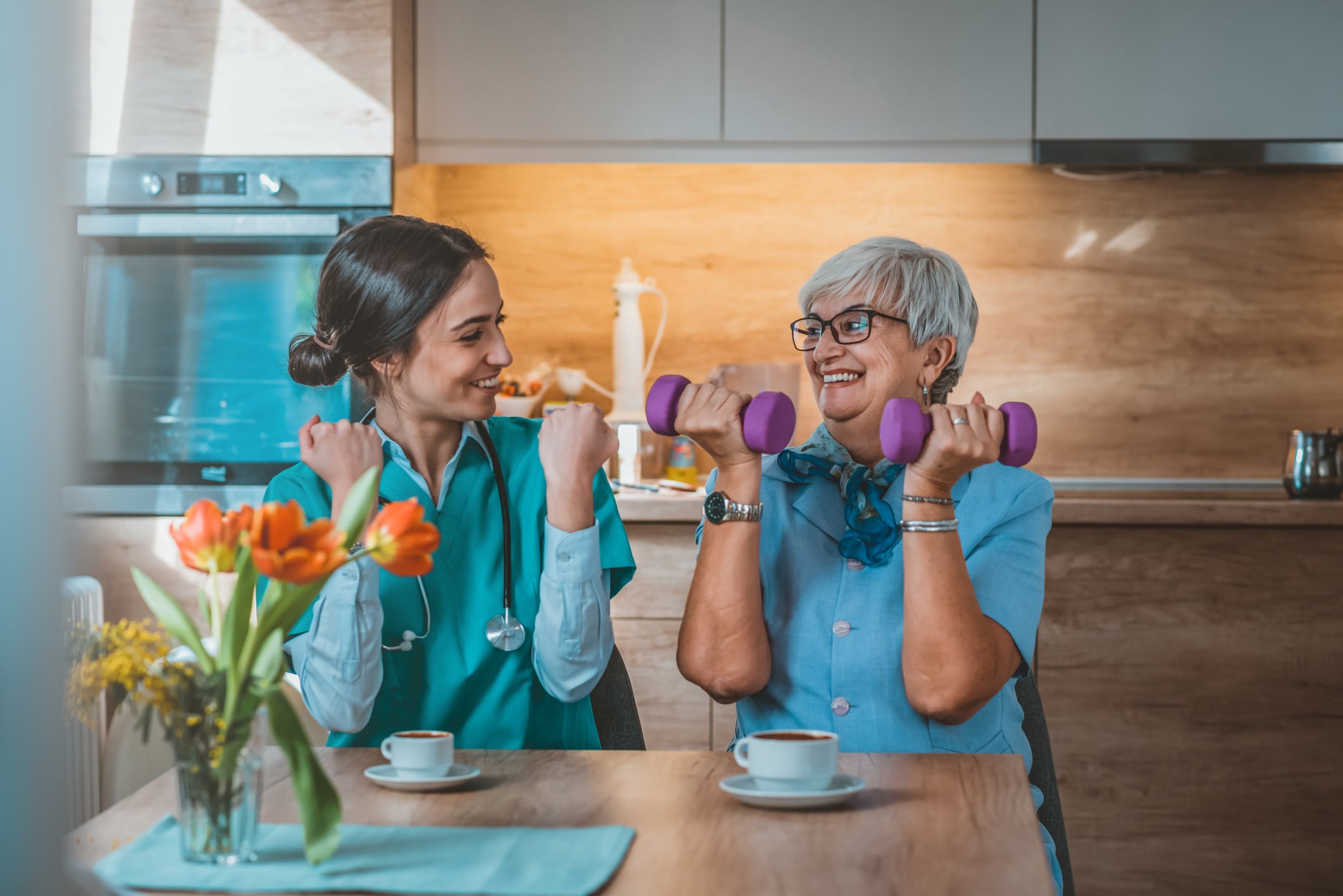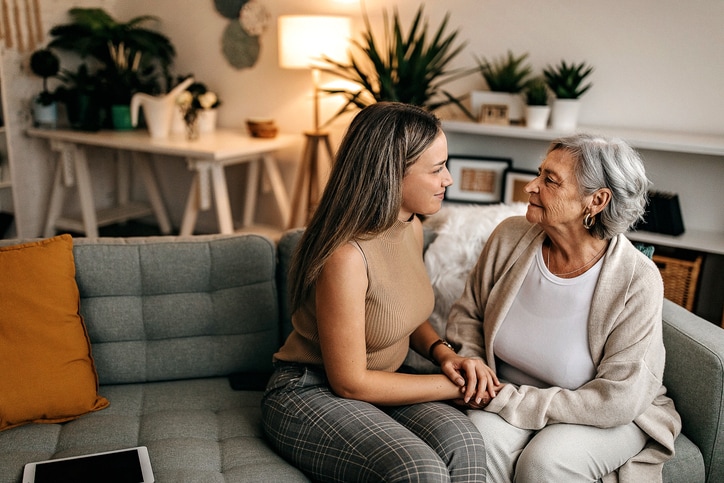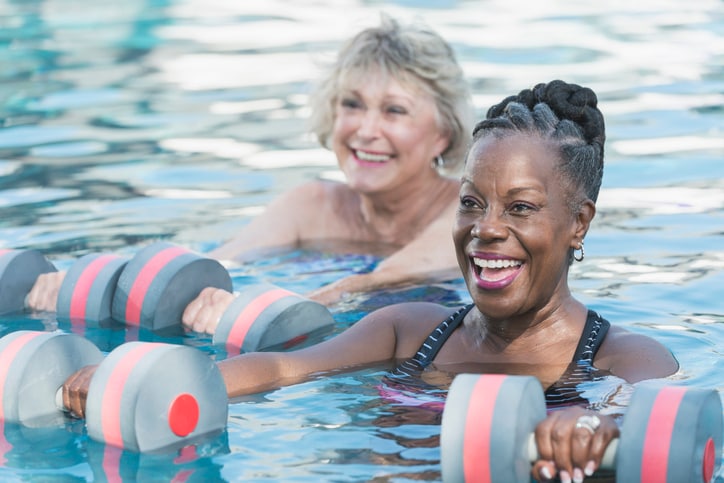There’s no doubt about it: Regular exercise is key for older adults and beneficial for many aspects of aging. In addition to reducing the risk of chronic diseases and improving cardiovascular health, “physical activity builds strength, enhances flexibility and range of motion and improves balance and coordination,” explains Linda Borgmeyer, founder of the Wisdom Warrior Challenge and owner of Novoleo Therapy and Fitness in Palm Beach Gardens, Florida.
And as a byproduct of the strength and balance seniors gain from exercise, their fall risk reduces while their overall well-being increases, notes Dr. Bob Mirsky, chief medical officer at Nymbl and former vice president of medical operations at Aetna Medicare. “When older adults have strong balance, they’re more apt to leave their homes and get out into the community and engage in activities they truly enjoy,” he says. “This helps combat loneliness and depression and contributes to their sense of purpose.
Whether you’re an older adult or a family or professional caregiver, check out our list of expert-vetted exercises for seniors at home.
Exercises for seniors at home
Here, Borgmeyer, Mirsky and other experts share exercises older adults of all abilities can do at home.
NOTE: Before starting any new exercises, make sure to consult with your healthcare provider or that of your loved one or client. You should also practice safety precautions for exercising at home, by wearing proper footwear, staying hydrated and exercising in an open space to reduce fall risk.
Warm-up exercises
Before engaging in more vigorous exercises, Borgmeyer recommends warming up. Here are two of her favorite warm-up exercises for older adults.
Neck stretches
- Sit or stand tall with your shoulders relaxed.
- Gently tilt your head to one side, bringing your ear closer to your shoulder. Hold for a few seconds and then repeat on the other side.
- Next, slowly turn your head to the left, looking over your shoulder. Hold for a few seconds and then repeat on the right side.
- Finally, lower your chin towards your chest, feeling a stretch in the back of your neck. Hold for a few seconds before returning to the starting position.
Hip circles
- Stand with your feet hip-width apart and place your hands on your hips.
- Begin rotating your hips in a circular motion, moving them forward, to the side, back and then to the other side.
- Perform hip circles 5-10 times in one direction and then switch to the opposite direction.
Balancing exercises
Both Borgmeyer and Mirsky agree that maintaining balance is key for reducing the risk of falls. Here, two of Borgmeyer’s favorite balancing exercises.
Heel and toe raises
- Stand upright with your feet hip-width apart and arms by your sides.
- Slowly raise your heels off the ground, lifting your body weight onto your toes.
- Lower your heels back to the ground. Repeat 10-15 times.
- Next, shift your weight to your heels and raise your toes off the ground. Lower them back down.
- Repeat as many times as you can in 30 seconds.
Heel-to-toe walk
- Find a clear space where you can walk in a straight line.
- Position your heel against the toes of the opposite foot, creating a heel-to-toe stance.
- Take small, deliberate steps, maintaining balance with each step.
- Walk along the counter for safety if needed
- Repeat for a distance of 10-15 feet.
Strengthening exercises
In addition to balancing exercises, strength-enhancing activities are “vital for maintaining independence and reducing the risk of falls,” Borgmeyer explains.
“Weight-bearing activities are key,” Mirsky agrees. “They increase muscle mass, which can help with balance.
Here are a few exercises recommended by both Borgmeyer and Josh York, a certified personal trainer and founder and CEO of GymGuyz in-home personal training.
Chair squats
- Begin by standing in front of a sturdy chair with your feet shoulder-width apart.
- Extend your arms forward for balance.
- Slowly lower yourself toward the chair as if you were going to sit down.
- Pause briefly, stand back up. Repeat as many times in 30 seconds.
Side leg raises
- Stand behind a chair, using it for balance if needed.
- Lift one leg out to the side, keeping it straight.
- Return the leg to the starting position and repeat on the other side.
- Repeat as many times as you can in 30 seconds.
Wall pushups
- Stand facing a wall at arm’s length, feet hip-width apart.
- Place palms flat against the wall at shoulder height.
- Bend elbows to lower your chest toward the wall, then push back to starting position.
- Repeat for 10-15 repetitions, 2-3 sets.
Leg raises
- Sit tall in a chair with feet flat on the floor and hands resting on the sides for support.
- Lift one leg straight out in front of you, keeping it parallel to the floor.
- Hold for a few seconds, then lower it back down.
- Alternate legs and repeat for 10-15 repetitions on each side, 2-3 sets.
Tension-releasing exercises
Miranda Esmonde-White, author of “Aging Backwards” and founder of Essentrics, a fitness program that focuses on strength, posture, mobility and flexibility in older adults, recommends the following exercises in order to relieve tension and even pain in targeted areas.
Slow shoulder rotations
- Stand with your feet wider than your hips, and let your arms relax at your sides.
- Keep your arms relaxed and hanging at your sides throughout the shoulder rotations. Do these shoulder rotations smoothly; don’t jerk through the movements.
- Pull both shoulders in front of you as far as possible.
- Slowly lift your shoulders as high as possible.
- Slowly drop your shoulders backward, imagining you are putting your shoulder blades into your back pockets.
- Take your time to slowly rotate through your entire range of motion. If your shoulders are tense or blocked, take deep breaths to help you release the tension.
- Allow your muscles to release tension with every move. Give them time to release before continuing in the rotation.
- Repeat 4 to 6 times in each direction (forward and back).
Embrace yourself sequence
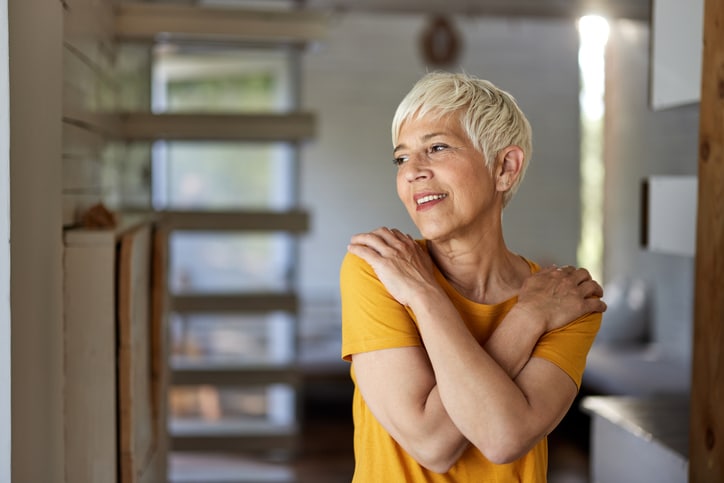
- Stand with your feet apart and your arms relaxed.
- Wrap your arms around your body, embracing yourself.
- Gently rock your body side to side as though you were comforting yourself, shifting your weight from one leg to the other.
- Rock yourself slowly about 8 times.
Read more:
How often should older adults exercise?
Older adults should aim for at least five days a week, dedicating at least 15 minutes to each session, notes Borgmeyer.
“It’s fine to mix and match exercises to keep the routine varied and enjoyable,” she continues. “Just remember to stay hydrated by drinking water before, during and after exercise sessions; and monitor your progress and celebrate your achievements, no matter how small!”
The bottom line
Physical activity is crucial for older adults — and you needn’t belong to a fancy gym in order to meaningfully move your body.
“Staying active has so many benefits, including enhanced mood, cognitive function and overall quality of life,” York says. “And many exercises geared towards seniors can be done with minimal or no equipment.”
Just remember, he adds, start slow and gradually increase intensity as you become more comfortable, and always consult a health care practitioner or certified trainer before starting a new routine.
